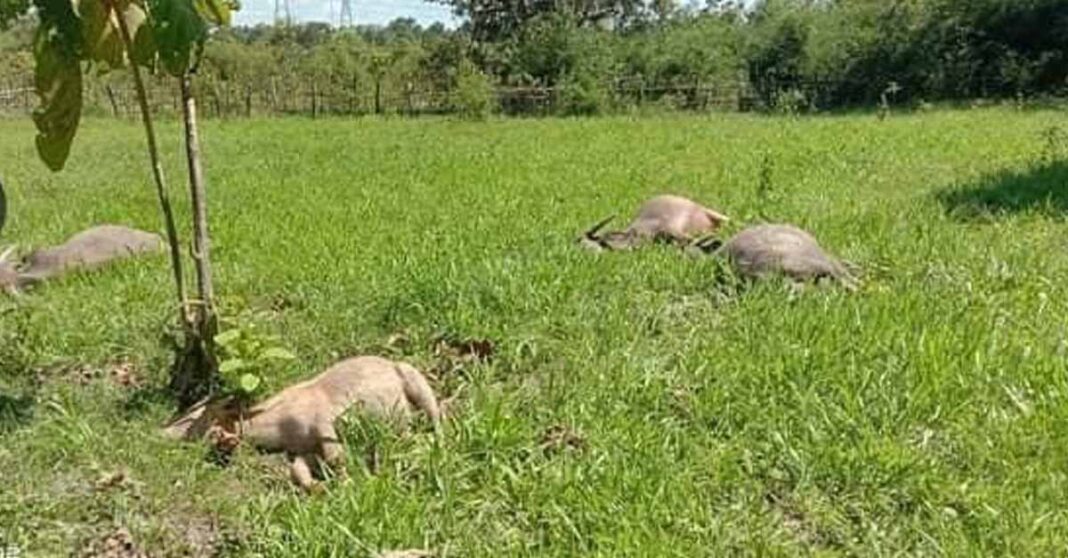Veterinarians and authorities have investigated and identified the disease as Hemorrhagic Septicemia, which caused the deaths of over 20 water buffaloes in Pak Ngam District.
Mr. Khammoun Tengthalath, Deputy Mayor of Pak Ngam District, stated during an interview with Lao National Radio that a family who owns water buffaloes found one of them dead and consumed the buffalo’s meat without informing the authorities.
In the next few days, the family lost over 20 of their buffaloes and two of their neighbor’s buffaloes also died. Following this incident, the family reported the deaths to the local authorities.
The district government had appointed the veterinary department to investigate and determine the cause of deaths and recommended that the dead animals be disposed off properly.
The Deputy Mayor also confirmed that the buffaloes that died in Pak Ngm District this time were not killed by drugs or chemicals from foreign factories in the district. In the past, the same family had also lost buffaloes that had not been vaccinated against animal diseases. So it was likely that they contracted the bacterial disease of Hemorrhagic Septicemia.

The deputy mayor called on farmers in Pak Ngm District who have livestock, particularly cattle, to vaccinate them and avoid having the meat of dead animals as it could be dangerous for them.
According to Laos Buffalo Dairy, the disease of Hemorrhagic Septicemia in buffaloes is exhibited with the initial symptoms of standing, avoiding food, or some buffalos soak themselves in water without moving. They could also develop a fever and start bleeding.
The dairy farm has yet to experience the spread of this disease in their cattle as vaccinations are administered twice a year to prevent it.
However, videos and photos on social media show symptoms of the disease in the incident in Pak Ngum District, Vientiane Capital.



